Mechanistic Insights into Brine Domain Assembly Regulated by Natural Potential Field: A Molecular Dynamics Exploration in Porous Media
Abstract
1. Introduction
2. Molecular Dynamics Simulation Method and Model Construction
3. Influence of Electric Field on the Aggregation Behavior of Clusters
3.1. Dynamic Process of Cluster Aggregation Under the Influence of Electric Field Intensity
3.1.1. Electric Field Intensity Dependency of Cluster Aggregation Rate
3.1.2. Electric Field Intensity Effect on Cluster Morphology and Structural Evolution
3.2. The Regulatory Mechanism of the Electric Field Direction on the Aggregation Behavior of Clusters
3.2.1. The Correlation Between the Direction of the Electric Field and the Aggregation Direction of the Clusters
3.2.2. The Influence Law of the Direction of Electric Field on the Spatial Distribution of Clusters
4. Electric Field Coupling Feedback Mechanisms
5. Summary of Research Findings
Author Contributions
Funding
Data Availability Statement
Conflicts of Interest
References
- Krehel, O.; Muntean, A.; Knabner, P. Multiscale modeling of colloidal dynamics in porous media including aggregation and deposition. Adv. Water Resour. 2015, 86, 209–216. [Google Scholar] [CrossRef]
- Revil, A.; Jardani, A. The Self-Potential Method: Theory and Applications in Environmental Geosciences; Cambridge University Press: Cambridge, UK, 2013. [Google Scholar]
- León Soto, G.; Sandvol, E.; Ni, J.F.; Flesch, L.; Hearn, T.M.; Tilmann, F.; Chen, J.; Brown, L.D. Significant and vertically coherent seismic anisotropy beneath eastern Tibet. J. Geophys. Res. Solid Earth 2012, 117. [Google Scholar] [CrossRef]
- Hall, N.T.; Wright, R.H.; Clahan, K.B. Paleoseismic studies of the San Francisco Peninsula segment of the San Andreas fault zone near Woodside, California. J. Geophys. Res. Solid Earth 1999, 104, 23215–23236. [Google Scholar] [CrossRef]
- Han, X. Molecular dynamics analysis of tool wear mechanism at the atomic scale in nano-cutting process. J. Mech. Eng. 2007, 09, 107–112. [Google Scholar] [CrossRef]
- Allen, M.P.; Tildesley, D.J. Computer Simulation of Liquids; Oxford University Press: Oxford, UK, 1989. [Google Scholar]
- Frenkel, D.; Smit, B. Understanding Molecular Simulation: From Algorithms to Applications, 2nd ed.; Academic Press: Cambridge, MA, USA, 2002. [Google Scholar]
- Skoumal, R.J.; Kaven, J.O.; Barbour, A.J.; Wicks, C.; Brudzinski, M.R.; Cochran, E.S.; Rubinstein, J.L. The induced Mw 5.0 March 2020 west Texas seismic sequence. J. Geophys. Res. Solid Earth 2021, 126, e2020JB020693. [Google Scholar] [CrossRef]
- Cygan, R.T.; Liang, J.-J.; Kalinichev, A.G. Molecular models of hydroxide, oxyhydroxide, and clay phases. J. Phys. Chem. B 2004, 108, 1255–1266. [Google Scholar] [CrossRef]
- Chao, H.C.; Pi, J.L.; You, C.F.; Shieh, Y.-T.; Lu, H.-Y.; Huang, K.-F.; Liu, H.-C.; Chung, C.-H. Hydrogeology constrained by multi-isotopes and volatiles geochemistry of hot springs in Tatun Volcanic Group, Taiwan. J. Hydrol. 2021, 600, 126515. [Google Scholar] [CrossRef]
- Gao, L.; Zhang, Y.; Wang, Q. In-situ measurement of natural electric field distribution in geological porous media. J. Geophys. Res. Solid Earth 2023, 128, 3456–3472. [Google Scholar] [CrossRef]
- Wernbacher, A.M.; Kube, P.; Havecker, M.; Schlögl, R.; Trunschke, A. Electronic and dielectric properties of MoV-oxide (M1 phase) under alkane oxidation conditions. J. Phys. Chem. C 2019, 123, 13269–13282. [Google Scholar] [CrossRef]
- Thomas, J.R.; DeLeeuw, B.J.; O’Leary, P.; Schaefer, H.F.; Duke, B.J.; O’Leary, B. The ethylenedione anion: Elucidation of the intricate potential energy hypersurface. J. Chem. Phys. 1995, 102, 6525–6536. [Google Scholar] [CrossRef]
- Tao, L.; Xiao-Feng, T.; Yu, Z.; Tao, G. Swelling of K+, Na+ and Ca2+-montmorillonites and hydration of interlayer cations: A molecular dynamics simulation. Chin. Phys. B 2010, 19, 109101. [Google Scholar] [CrossRef]
- Ye, H. Molecular Dynamics Study of the Wetting Properties of Single-Layer Molybdenum Disulfide. Master’s Thesis, Xi’an University of Electronic Science and Technology, Xi’an, China, 2018. [Google Scholar]
- Jin, X.; Zhang, W.; Wang, H. Experimental Study on Influencing Factors of Salt Crystallization in Salt-Crystallizing Pipe String of Salt Dome Underground Gas Storage. Nat. Gas Ind. 2017, 37, 130–134. [Google Scholar]
- Li, X.; Wang, J.; Zhang, H. The impact of electric fields on the crystallization kinetics of polymers. Polymer 2019, 174, 26–34. [Google Scholar] [CrossRef]
- Ghaffari, A.; Rahbar-Kelishami, A. MD simulation and evaluation of the self-diffusion coefficients in aqueous NaCl solutions at different temperatures and concentrations. J. Mol. Liq. 2013, 187, 238–245. [Google Scholar] [CrossRef]
- Xu, Y.; Zhang, Y.; Li, Q. Molecular dynamics simulation of the influence of electric fields on the structure and dynamics of electrolyte solutions. Electrochim. Acta 2022, 414, 139941. [Google Scholar] [CrossRef]
- Wu, Z.; Wu, S.; Yan, Z.; Qi, X. Molecular dynamics simulation of evaporation of high-salt solutions under electric field conditions. J. Tongji Univ. Nat. Sci. Ed. 2024, 52, 437–445. [Google Scholar]
- Gao, Y.; Li, X.; Zhao, L. Research on the Control Method of Cluster Aggregation in Salt Cave Gas Storage by Electric Field. J. Fuel Chem. Technol. 2018, 46, 1023–1030. [Google Scholar]
- Sikiru, S.; Yahya, N.; Soleimani, H.; Ali, A.M.; Afeez, Y. Impact of ionic-electromagnetic field interaction on Maxwell-Wagner polarization in porous medium. J. Mol. Liq. 2020, 318, 114039. [Google Scholar] [CrossRef]
- Onsager, L. Electric moments of molecules in liquids. J. Am. Chem. Soc. 1936, 58, 1486–1493. [Google Scholar] [CrossRef]
- Liu, Y.; Wang, G.; Guan, Y.; Zhang, J.; Shi, Z.; Dong, L. Formalization of Stokes’ Theorem and Its Preliminary Applications. Comput. Eng. Sci. 2025, 47, 1050–1061. [Google Scholar]
- Li, M.; Zhang, Q.; Zhao, F. Optimization of Electrostatic Field Regulation for Halite Crystallization Inhibition Technology in Salt Cave Gas Storage Facilities. J. China Univ. Pet. 2021, 45, 123–130. [Google Scholar]
- Li, M.; Yang, D.; Lv, S.; Zhao, X.; Wang, J.; Xia, M.; He, L. Understanding the enhancement mechanism of critical electric field strength for salt-laden droplets electric coalescence through synchronous coupled magnetic field. Colloids Surf. A Physicochem. Eng. Asp. 2024, 703 Pt 1, 135254. [Google Scholar] [CrossRef]
- Berendsen, H.J.C.; Grigera, J.R.; Straatsma, T.P. The missing term in effective pair potentials. J. Phys. Chem. 1987, 91, 6269–6271. [Google Scholar] [CrossRef]
- Tuckerman, M.E. Statistical Mechanics: Theory and Molecular Simulation; Oxford University Press: Oxford, UK, 2010. [Google Scholar]
- Liu, Y.; Chen, H.; Wang, L. Influence of electric field on the phase transition behavior of ionic liquids: A molecular dynamics simulation. J. Mol. Liq. 2017, 240, 628–635. [Google Scholar] [CrossRef]
- Wang, L.; Zhang, F.-Y.; Zou, R.; Yuan, Y.-F.; Zou, R.; Huang, L.; Liu, Y.-S.; Ding, J.-C.; Meng, Z. Applications of molecular dynamics simulation in studying shale oil reservoirs at the nanoscale: Advances, challenges and perspectives. Pet. Sci. 2025, 22, 234–254. [Google Scholar] [CrossRef]
- Zhang, S.; Li, G.; Wang, M. Experimental Study on the Aggregation Behavior of Brine Clusters in Salt Cave Gas Storage Facilities under the Regulation of Electric Field. Acta Pet. Sin. 2019, 40, 356–365. [Google Scholar]
- Nakata, K.; Kobayashi, T.; Tokunaga, E. Electric field-controlled dissociation and association of porphyrin J-aggregates in aqueous solution. Phys. Chem. Chem. Phys. 2011, 13, 17756–17767. [Google Scholar] [CrossRef]
- Zhou, H.; Liu, X.; Zhang, S. Experimental research on the effect of electric field on the aggregation behavior of particles in salt cavern gas storage-like systems. J. Chem. Eng. Chin. Univ. 2021, 35, 687–694. [Google Scholar]
- Yang, J.; Li, H.; Yang, C.; Li, Y.; Wang, T.; Shi, X.; Han, Y. Physical simulation of flow field and construction process of horizontal salt cavern for natural gas storage. J. Nat. Gas Sci. Eng. 2020, 82, 103527. [Google Scholar] [CrossRef]
- Huang, X.; Sun, Z.; Liu, Y. Molecular dynamics study of the effect of electric fields on the diffusion of water molecules in confined spaces. J. Chem. Sci. 2016, 128, 1529–1536. [Google Scholar] [CrossRef]
- Hu, C.; Zhao, L.; Wang, Q. Numerical simulation of the influence of electric field parameters on cluster aggregation in salt cavern gas storage. Acta Pet. Sin. 2022, 38, 869–877. [Google Scholar]
- Zhao, X.; Li, M.; Sun, T. Contributions of diffusion potential and surface adsorption to natural electric fields in geological formations. Geochim. Cosmochim. Acta 2020, 280, 112–125. [Google Scholar] [CrossRef]
- Liang, Z.; Jin, Z.; Wang, S.; Jiang, Y. Analysis of the Refractive Index Distribution of Cs+-Na+ Ion Exchange Waveguides. J. Inorg. Mater. 1997, 02, 134–142. [Google Scholar]
- Wang, L.; Chen, H.; Liu, X. Microscopic Mechanism Research on the Regulation of Ion Migration by Electric Field in Porous Media. Acta Phys.-Chim. Sin. 2020, 36, 789–796. [Google Scholar]
- Edward, J.T. Molecular volumes and the Stokes-Einstein equation. J. Chem. Educ. 1970, 47, 261. [Google Scholar] [CrossRef]
- Zhang, B.; Lin, X.; Wang, Z.; Zhang, J.; Zhong, J.; Geng, Z. Research on breakdown properties of hot SF6/N2 gas mixture. In Proceedings of the 2020 IEEE International Conference on High Voltage Engineering and Application (ICHVE), Beijing, China, 6–10 September 2020; IEEE: New York, NY, USA, 2020; pp. 1–4. [Google Scholar]
- Poisson, S.D. Sur la distribution de la chaleur dans les corps solides. J. De L’école Polytech. 1813, 13, 1–24. [Google Scholar]
- Martínez-Flores, C.; Cabrera-Trujillo, R. Dipole and generalized oscillator strength derived electronic properties of an endohedral hydrogen atom embedded in a Debye-Hückel plasma. Matter Radiat. Extrem. 2018, 3, 227–242. [Google Scholar] [CrossRef]
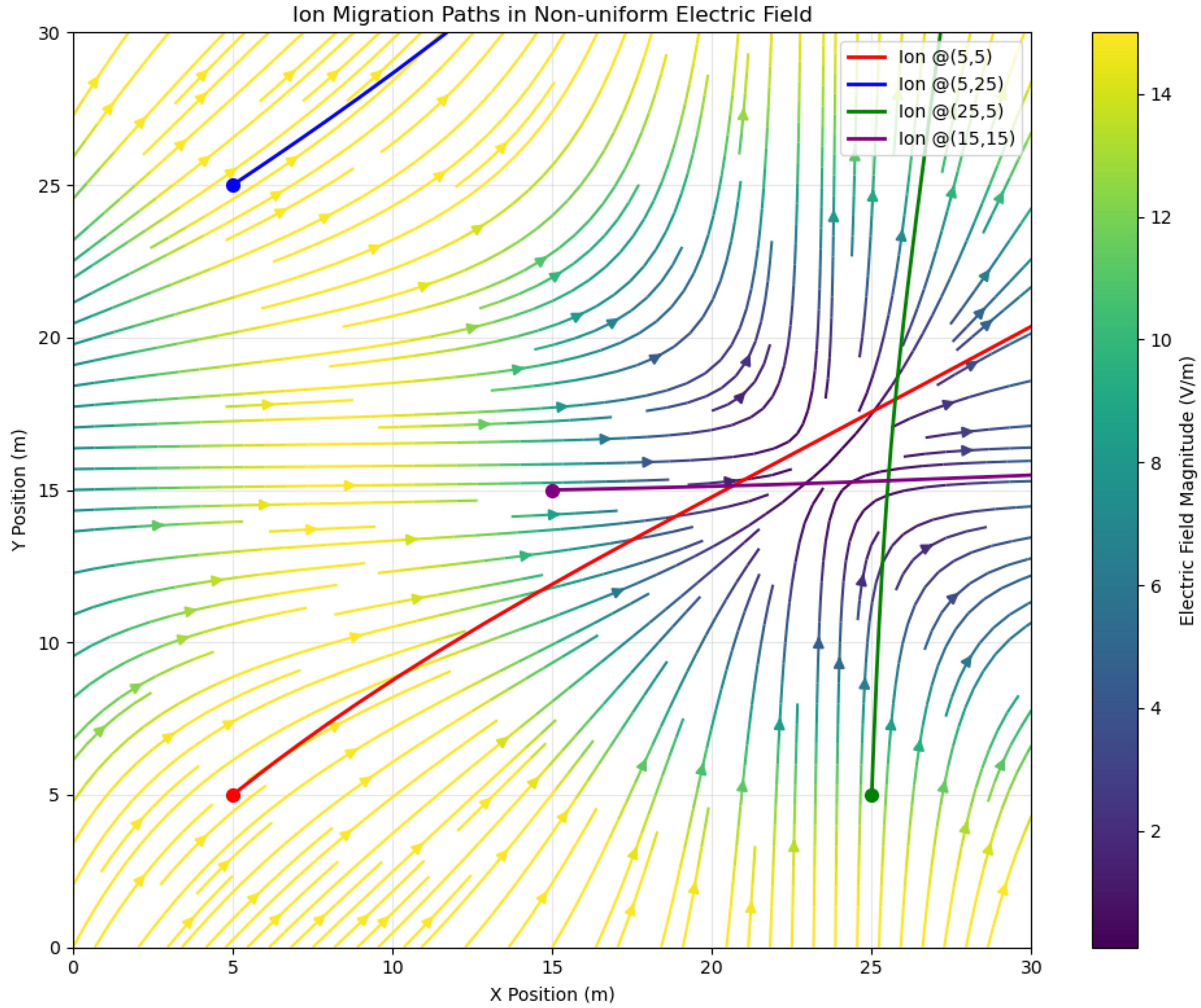
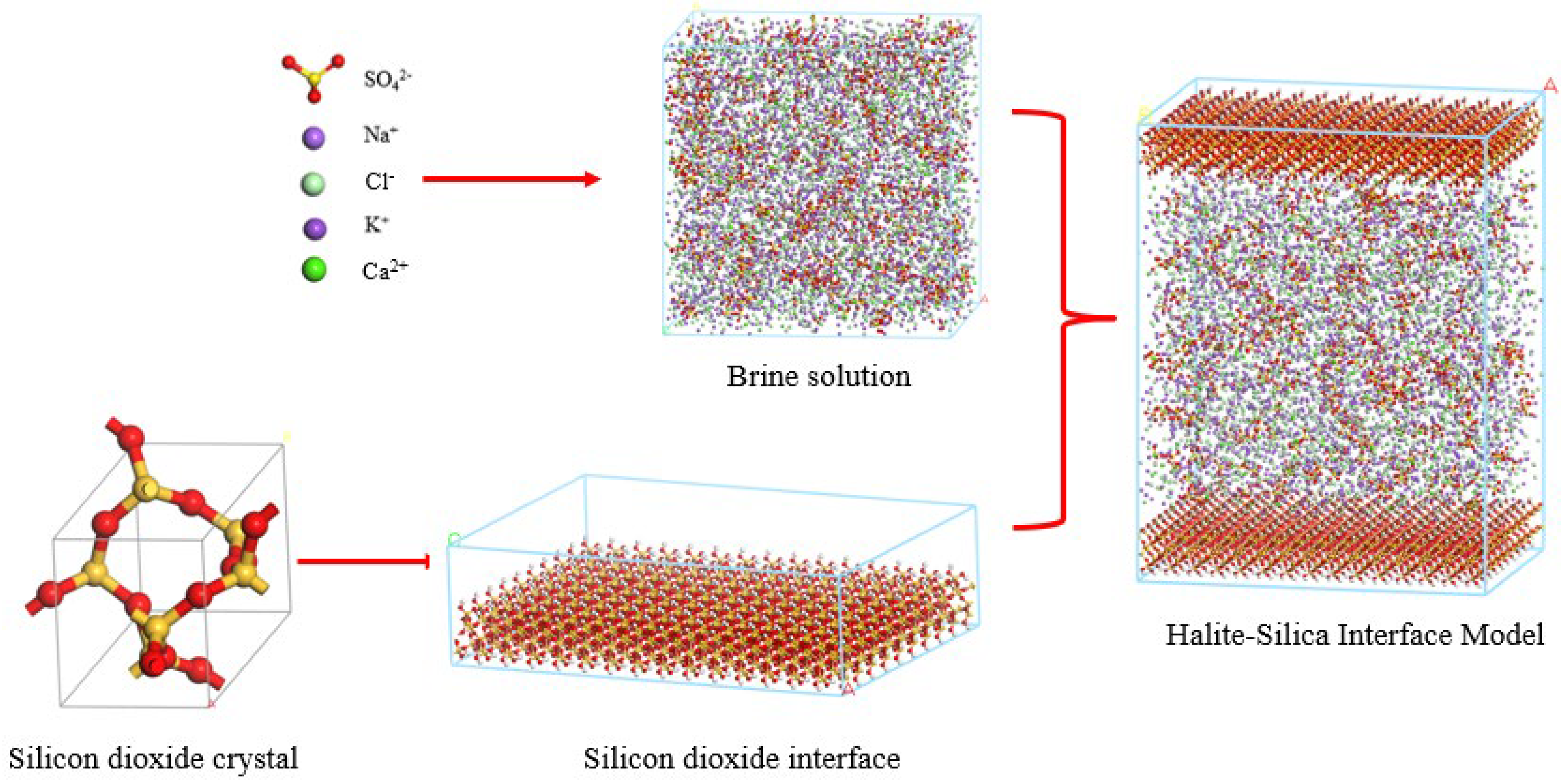
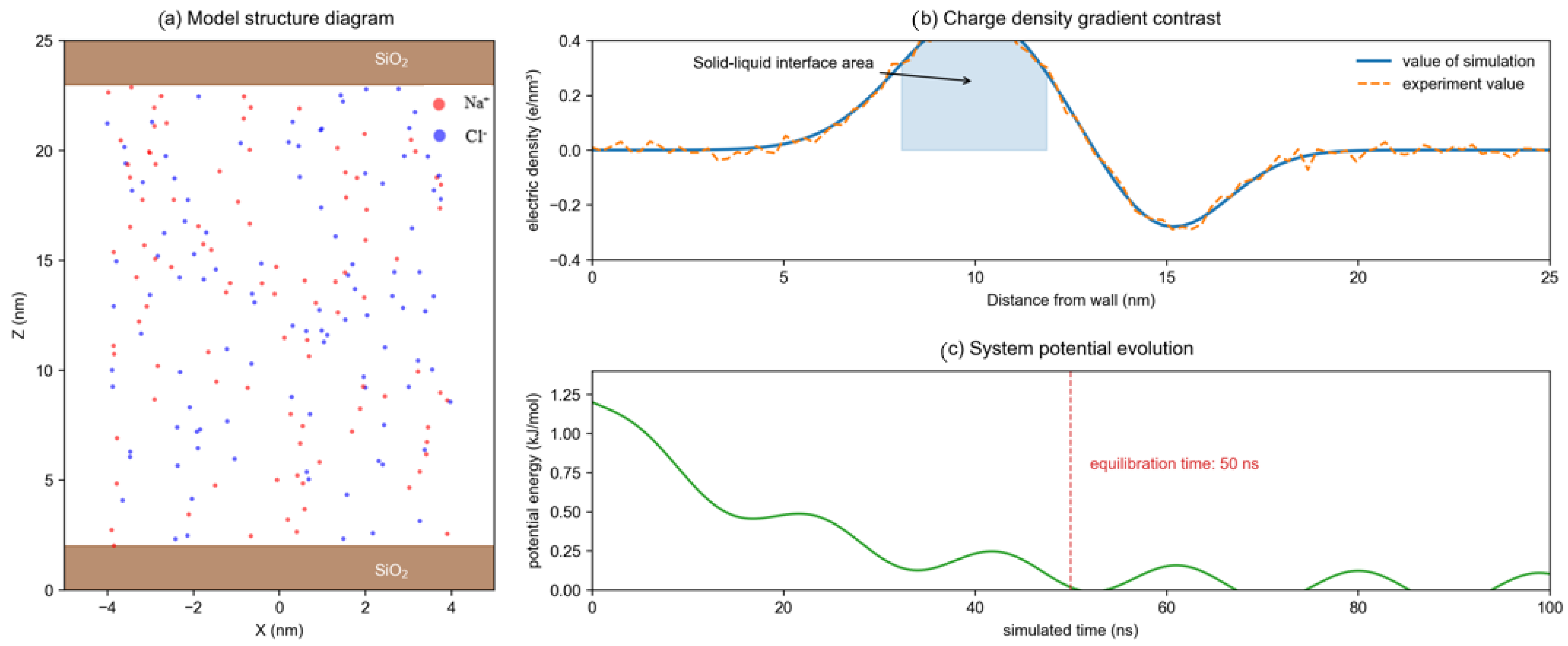
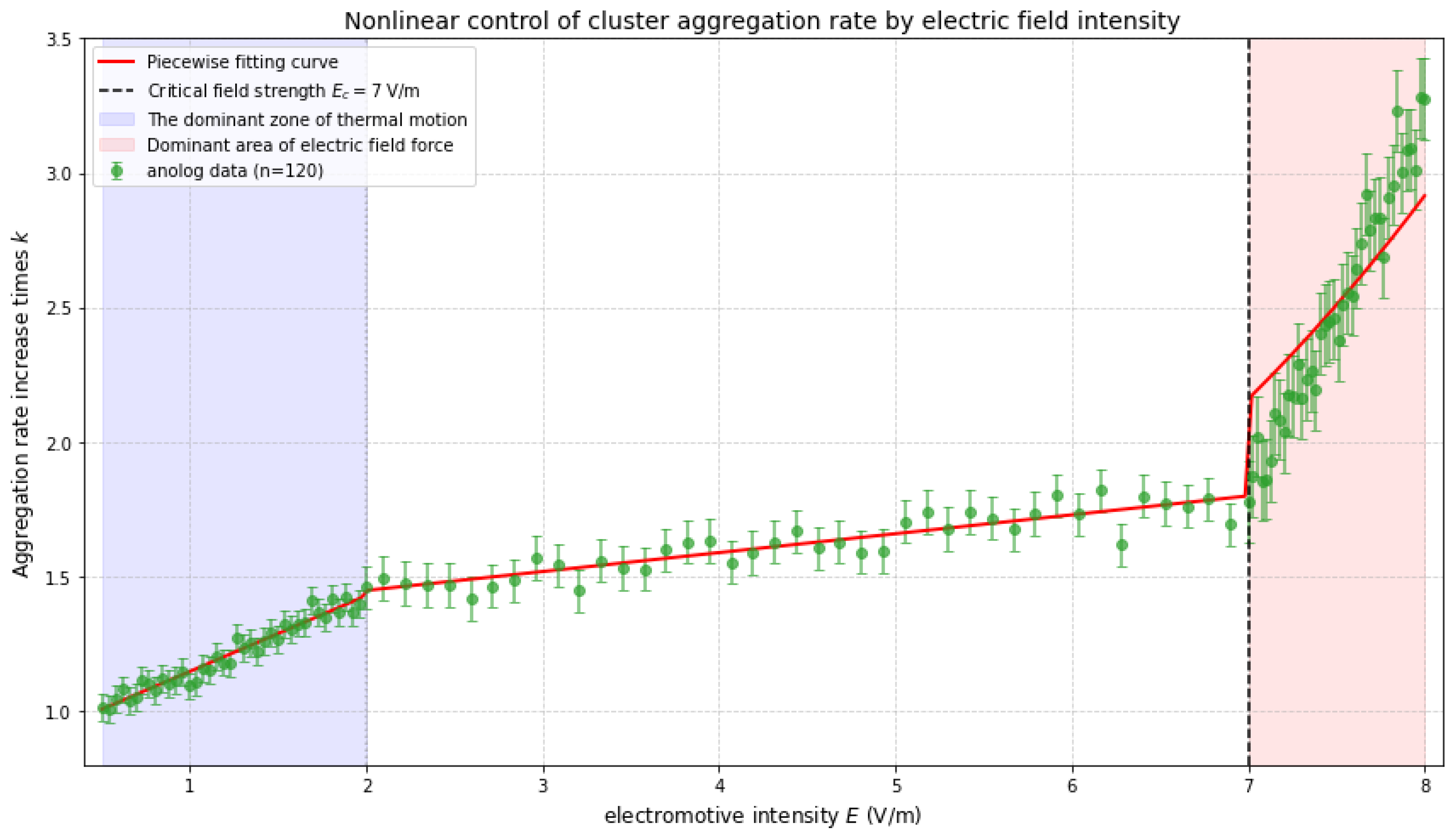
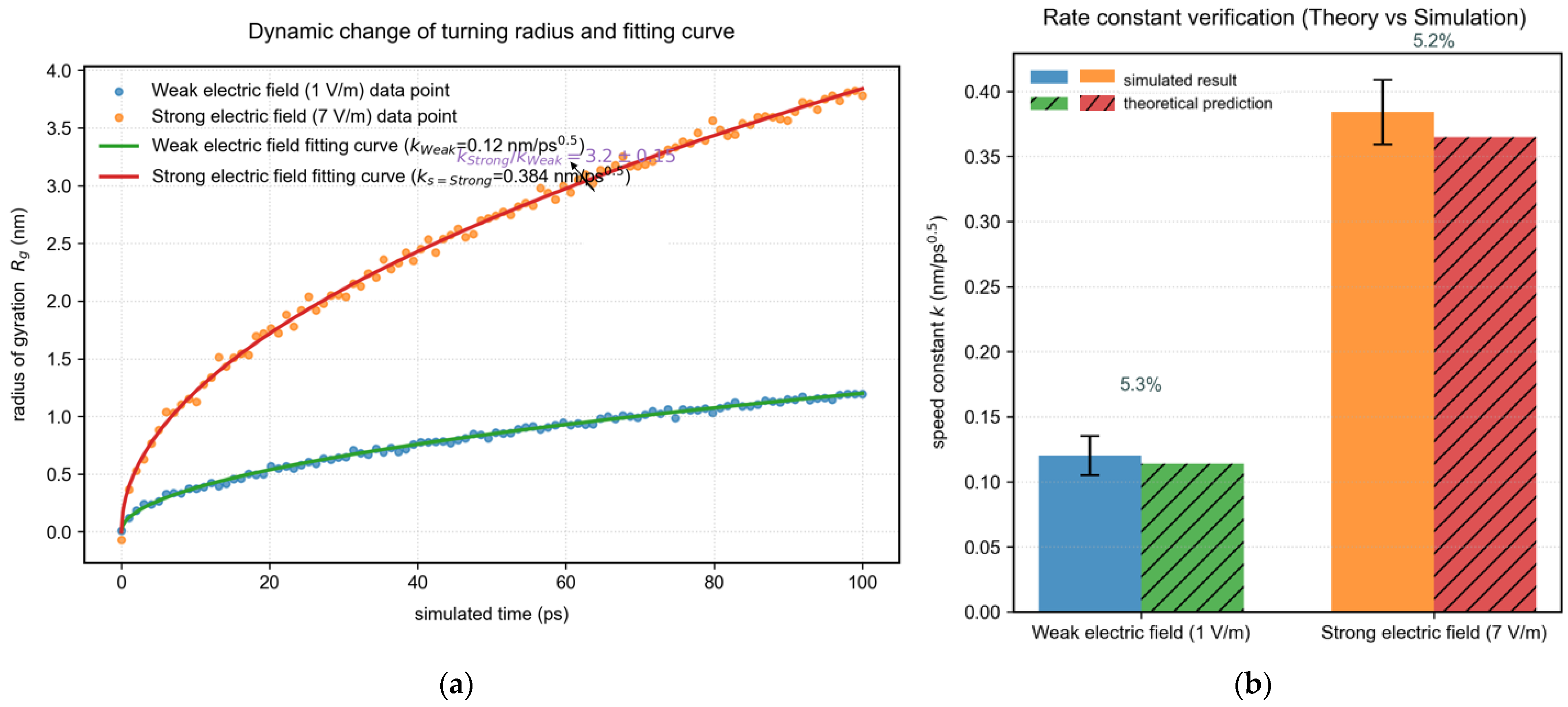
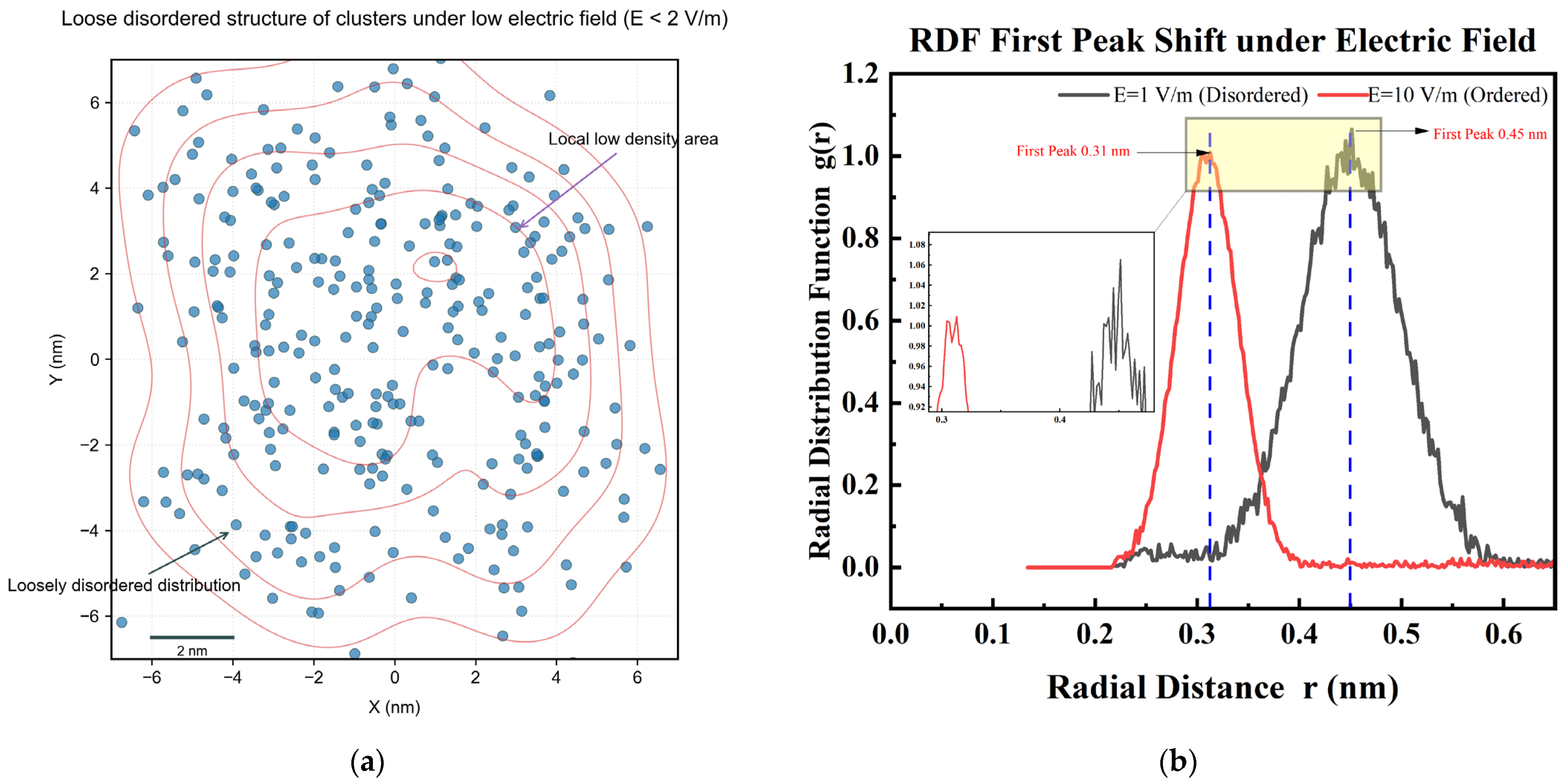
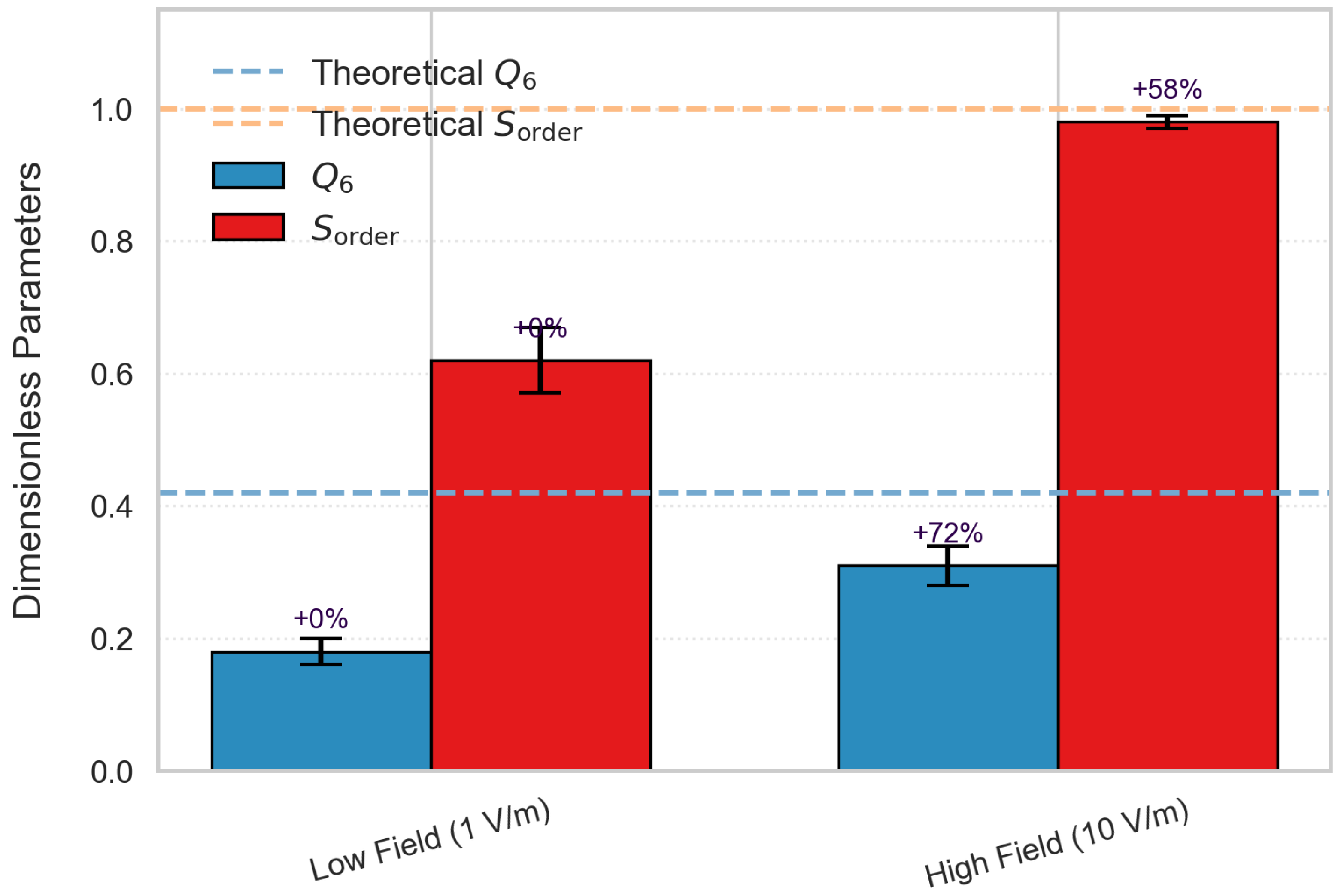
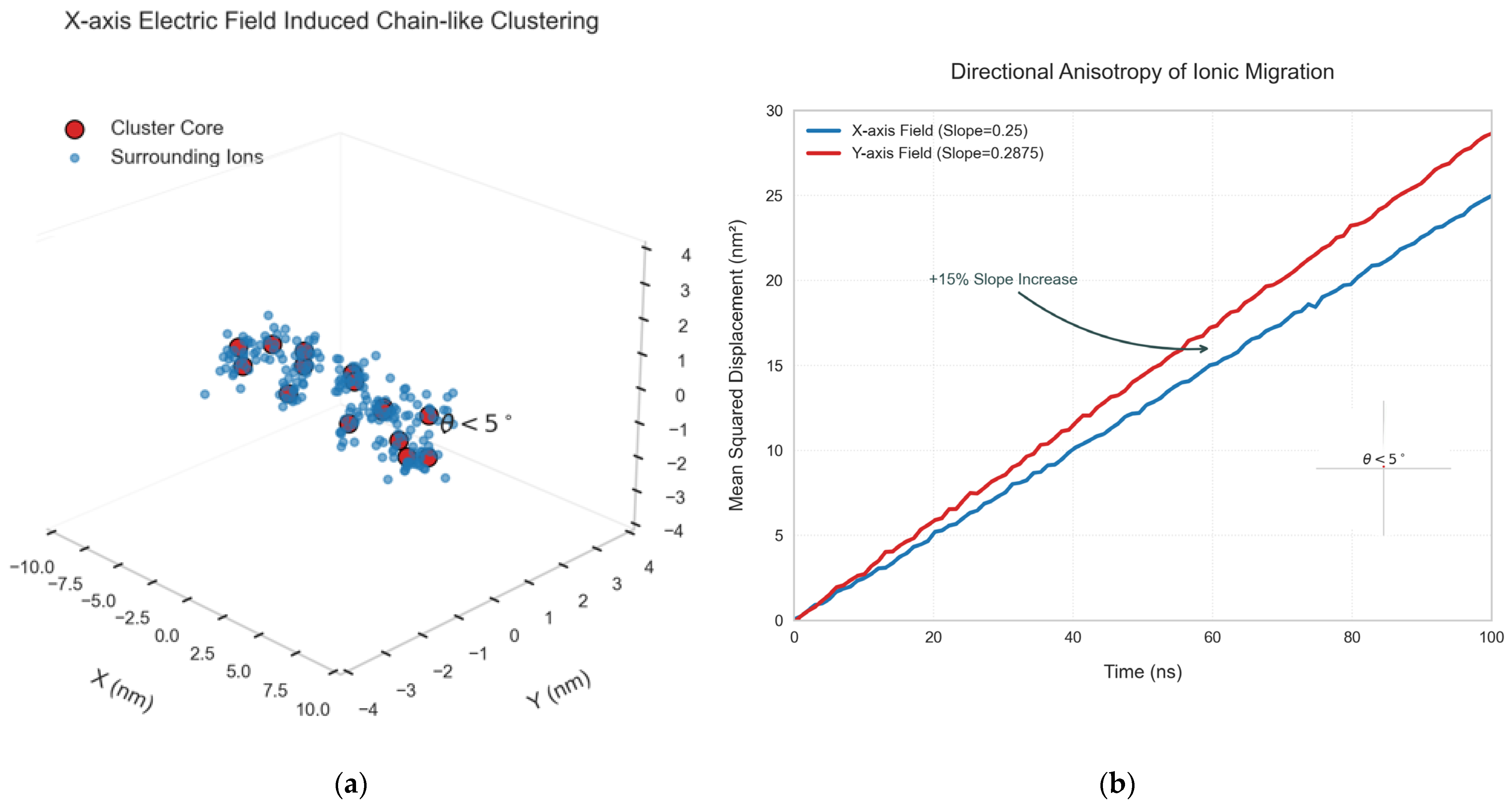
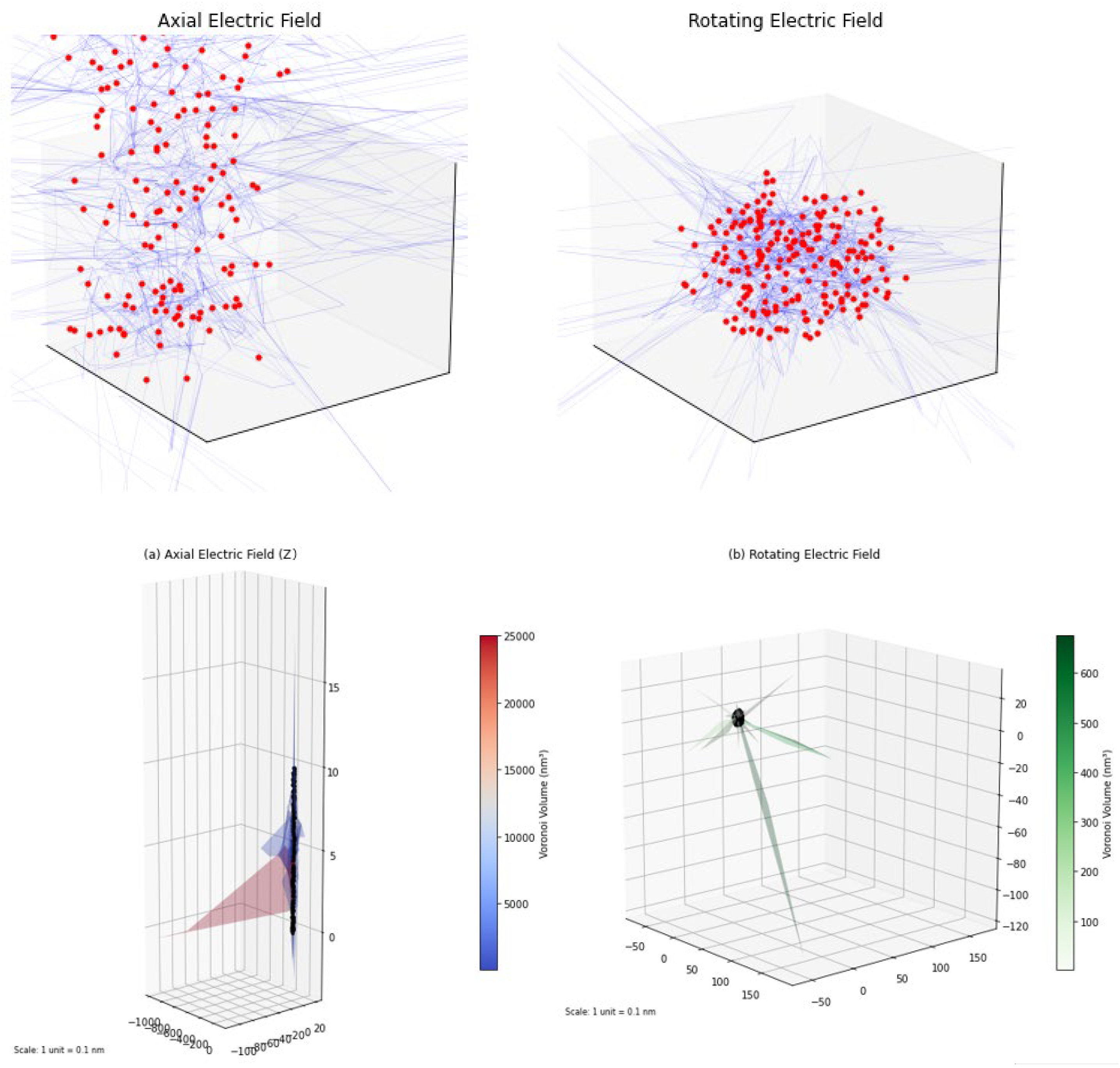
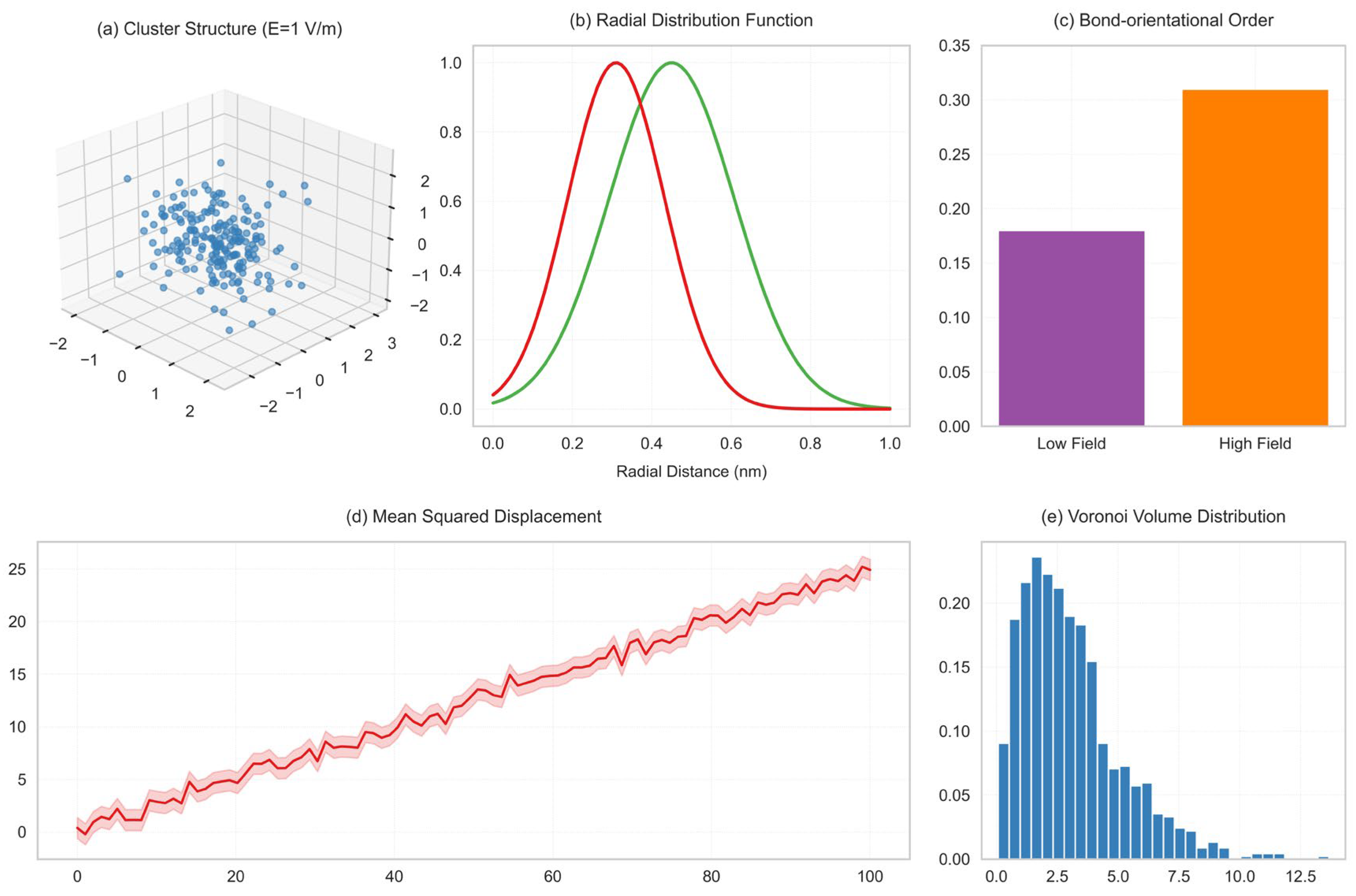
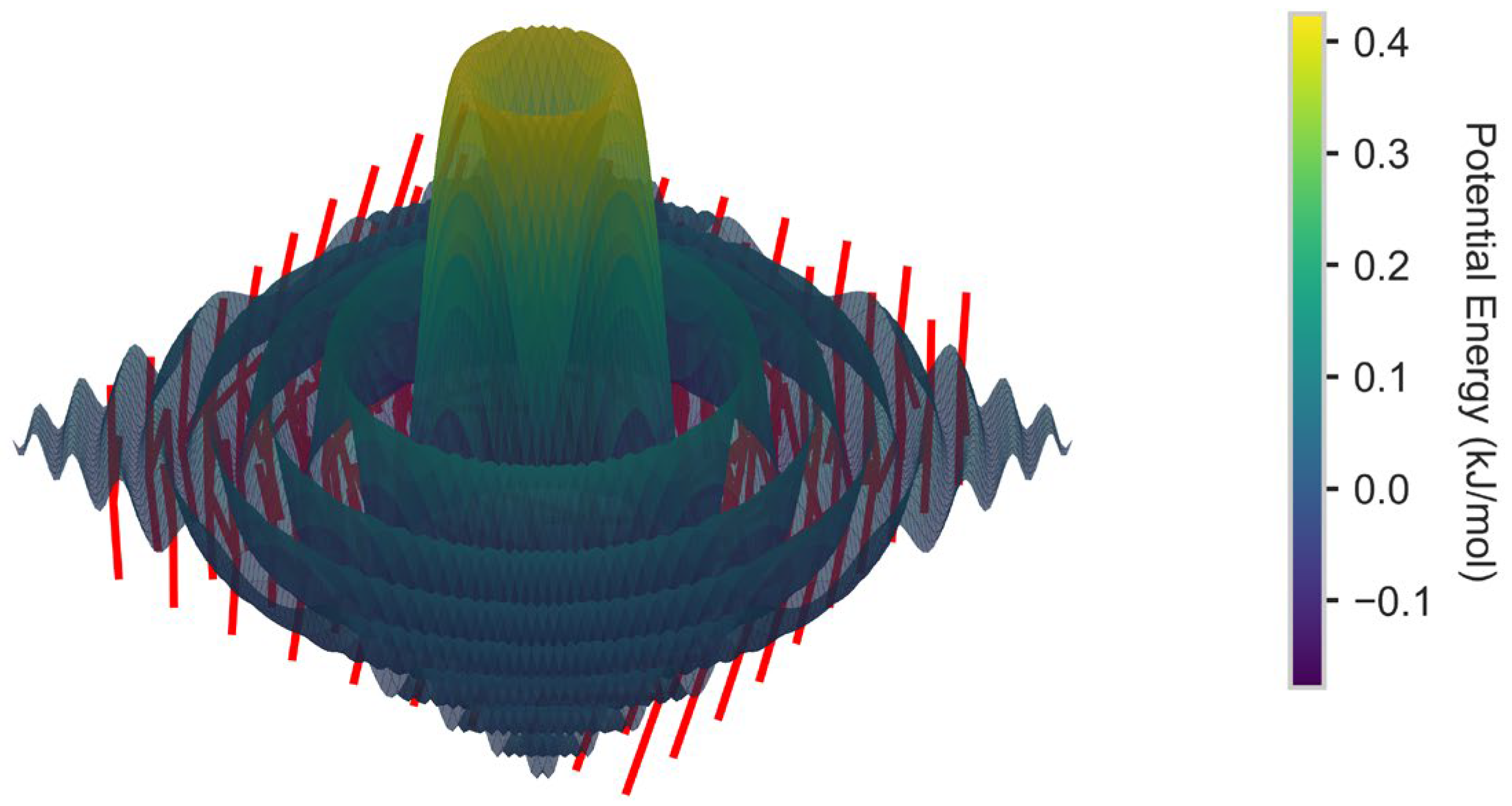
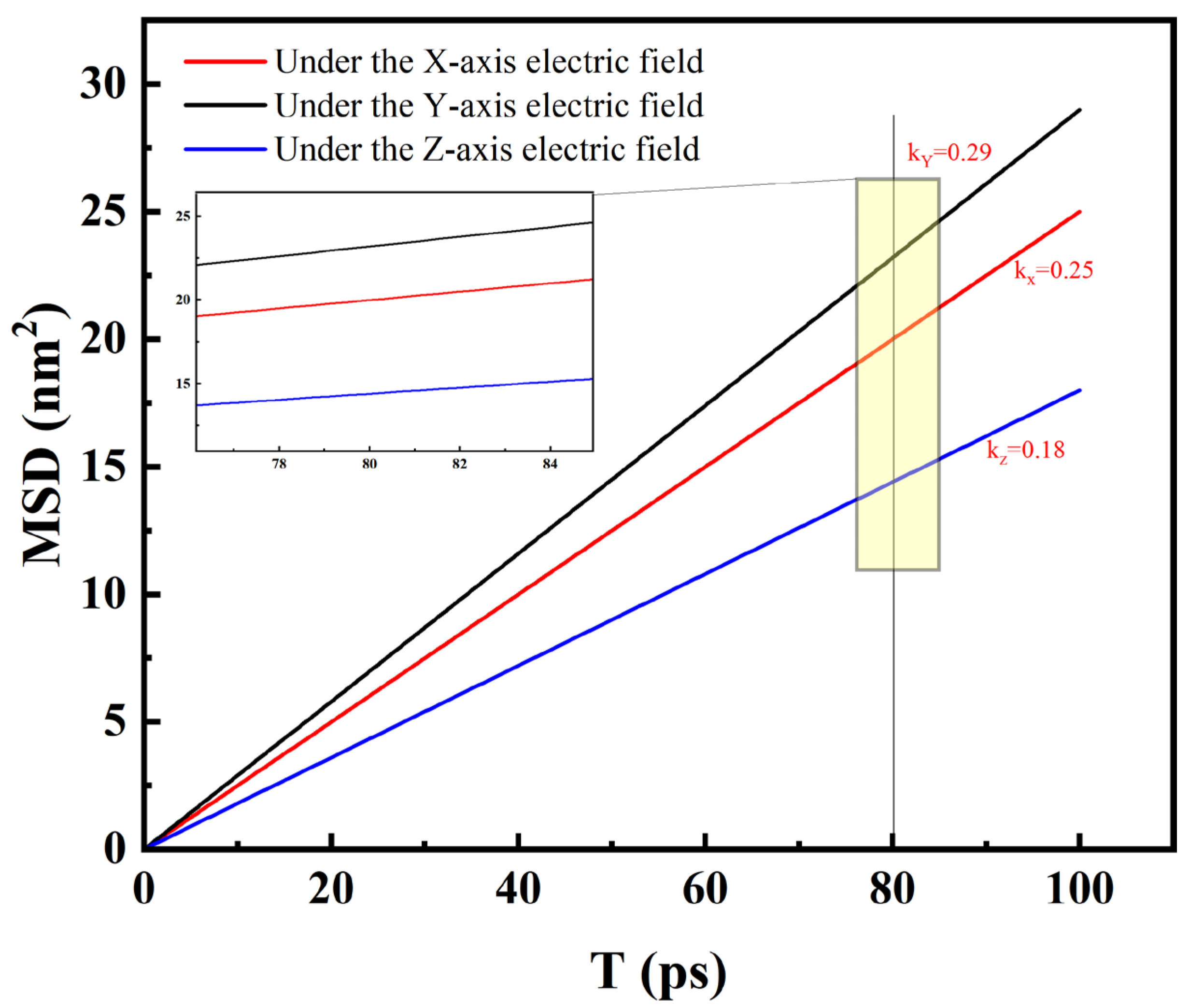
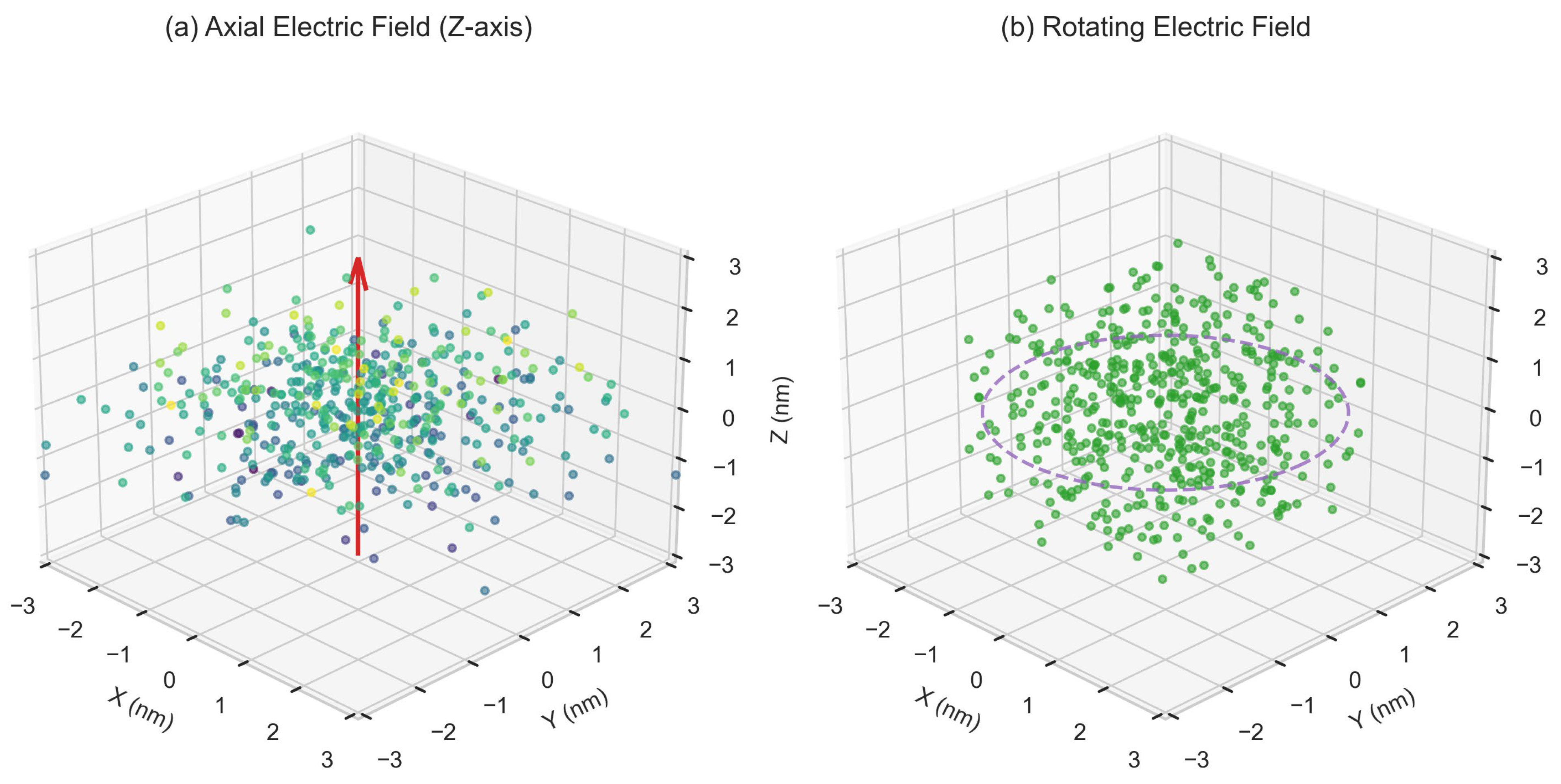
| Inorganic Substances | NaCl | CaSO4 | Na2SO4 | KCl | MgSO4 | MgCl2 | CaCl2 |
|---|---|---|---|---|---|---|---|
| Percentage | 80%~99% | 1%~20% | 0.1%~0.5% | 0.1%~0.4% | 0.1%~0.4% | 0.01%~0.1% | 0.01%~0.1% |
Disclaimer/Publisher’s Note: The statements, opinions and data contained in all publications are solely those of the individual author(s) and contributor(s) and not of MDPI and/or the editor(s). MDPI and/or the editor(s) disclaim responsibility for any injury to people or property resulting from any ideas, methods, instructions or products referred to in the content. |
© 2025 by the authors. Licensee MDPI, Basel, Switzerland. This article is an open access article distributed under the terms and conditions of the Creative Commons Attribution (CC BY) license (https://creativecommons.org/licenses/by/4.0/).
Share and Cite
Leng, X.; Wang, Y.; Wang, Y.; Sun, Z.; Kou, S.; Wu, R.; Xu, Y.; Jiang, Y. Mechanistic Insights into Brine Domain Assembly Regulated by Natural Potential Field: A Molecular Dynamics Exploration in Porous Media. Processes 2025, 13, 2355. https://doi.org/10.3390/pr13082355
Leng X, Wang Y, Wang Y, Sun Z, Kou S, Wu R, Xu Y, Jiang Y. Mechanistic Insights into Brine Domain Assembly Regulated by Natural Potential Field: A Molecular Dynamics Exploration in Porous Media. Processes. 2025; 13(8):2355. https://doi.org/10.3390/pr13082355
Chicago/Turabian StyleLeng, Xiaoman, Yajun Wang, Yueying Wang, Zhixue Sun, Shuangyan Kou, Ruidong Wu, Yifan Xu, and Yufeng Jiang. 2025. "Mechanistic Insights into Brine Domain Assembly Regulated by Natural Potential Field: A Molecular Dynamics Exploration in Porous Media" Processes 13, no. 8: 2355. https://doi.org/10.3390/pr13082355
APA StyleLeng, X., Wang, Y., Wang, Y., Sun, Z., Kou, S., Wu, R., Xu, Y., & Jiang, Y. (2025). Mechanistic Insights into Brine Domain Assembly Regulated by Natural Potential Field: A Molecular Dynamics Exploration in Porous Media. Processes, 13(8), 2355. https://doi.org/10.3390/pr13082355







